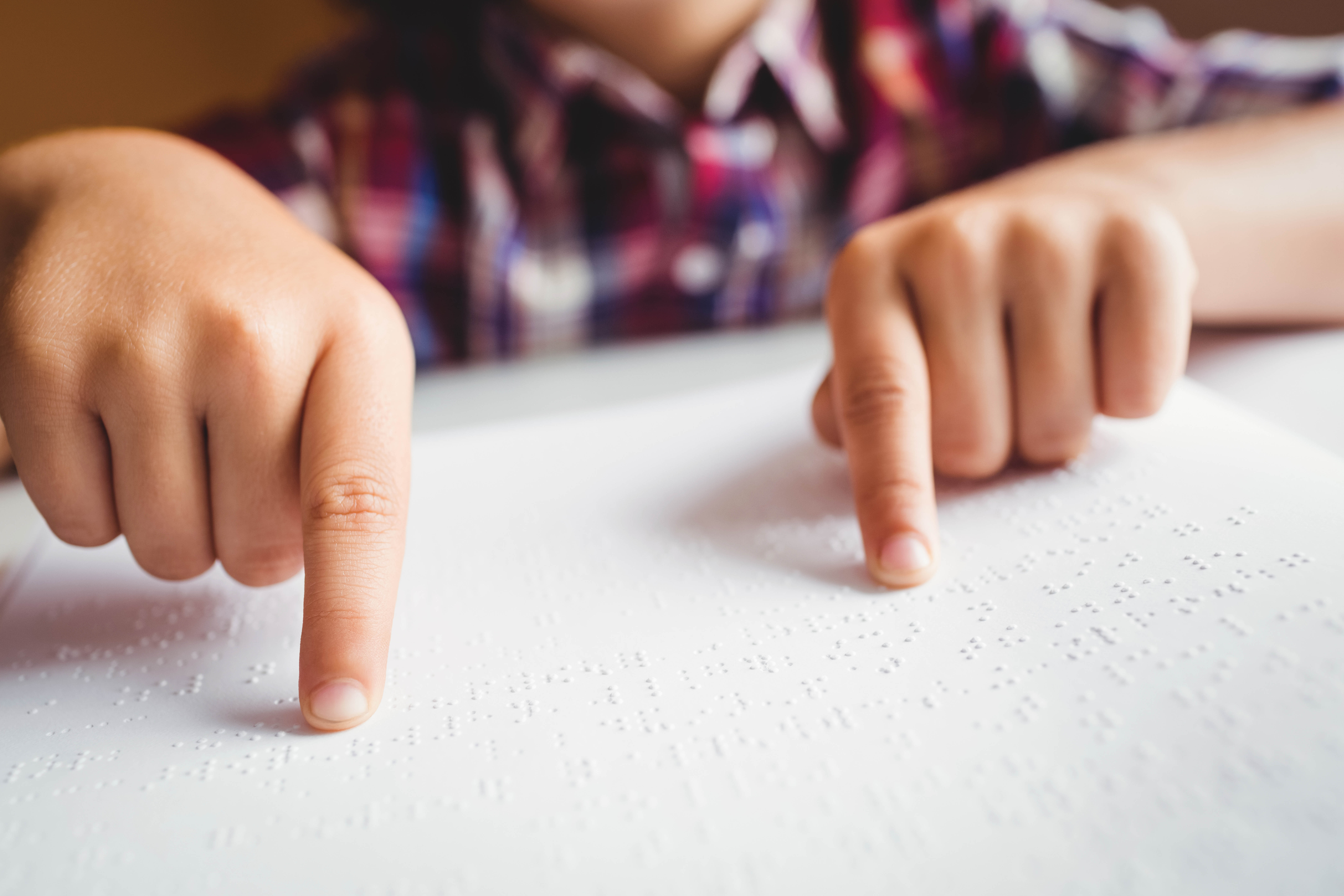Share this page
Professional knowledge and lived experience are key to AQ design.
By Lisa van de Geyn
Photo: istock

Timeshia Wesley-Edwards attended Brantford, Ont.'s, W. Ross Macdonald School for the blind from Grades 6 to 12. "It was the best school experience I've had — I benefited so much from going to school there," says the now 22-year-old Cree student who's about to receive her diploma in recreation therapy from Mohawk College. "I was taught life skills and my mobility got better. I was also active in school life, including being on student council, in music and athletics."
Last spring, the College contacted Wesley-Edwards because it was looking for visually impaired learners to discuss their educational experience for multiple reasons, including for the development of the Teaching Students Who Are Blind/Low Vision AQ. During that conversation, Wesley-Edwards spoke about what it was like to learn at a public school as a blind student. "I was fortunate — I had a full-time education assistant, on top of having a homeroom teacher, who had a class full of students. I got a lot of personal support and thrived, but I probably wouldn't have done so well without that help," she says.
It makes perfect sense, then, that Wesley-Edwards' mother, Beth Conly, OCT, an educational co-ordinator and consultant at W. Ross Macdonald School, was also asked by the College to participate in meetings related to teaching qualifications for Teaching Students Who Are Blind/Low Vision. "The College created a positive, welcoming environment for these discussions. The staff were very open to hearing input from all participants. The College is very much a proponent of a collaborative approach," she says.
Conly is familiar with collaborating with classroom teachers who, though not qualified as teachers of the blind/low vision, are supporting students who are blind or have low vision in their classes. "This can be daunting for teachers, since they don't know what to expect. There are preconceived notions. For example, it's hard for a classroom teacher to imagine how a student with a significant vision impairment can participate in certain parts of the curriculum, such as art," she says. "Thankfully, the teachers who are educated as vision teachers through the AQ course can help by providing accommodations for the student to include them in these kinds of activities as much as possible."
That's why, she says, it's essential to collaborate with people who have expertise and who have lived experience — there should be a variety of stakeholders with a variety of experiences. "The key people who should be consulted are the teachers who have previously been trained as vision specialists, as well as other professionals in the vision field. Most importantly, students who are visually impaired and their parents should be consulted in process," says Conly.
The same, of course, can be said for teaching the Deaf. Gary Malkowski was actively involved in the Teaching Students Who Are Deaf or Hard of Hearing AQ, which discussed teaching Deaf students and collected feedback to pass along to the College. The group involved about a dozen people, all from different backgrounds possessing different areas of expertise. "Collaboration is absolutely critical to get various perspectives. We need diversity in that group to ensure we bring more than one perspective and experience to the table. You can't do this without getting feedback from students, parents, people who are Deaf, teachers and others," says Malkowski, a part-time civic and career teacher at International Yeshivas Nefesh Dovid High School for the Deaf and Hard of Hearing in Toronto.
Theara Yim, OCT, is a Deaf teacher who teaches in a Montréal school. As a member of both the Deaf community and teaching profession, he was thrilled to collaborate on the AQ. "Every community was represented. As a Deaf teacher, it was nice to share my advice and experience. I appreciate how different everyone was."